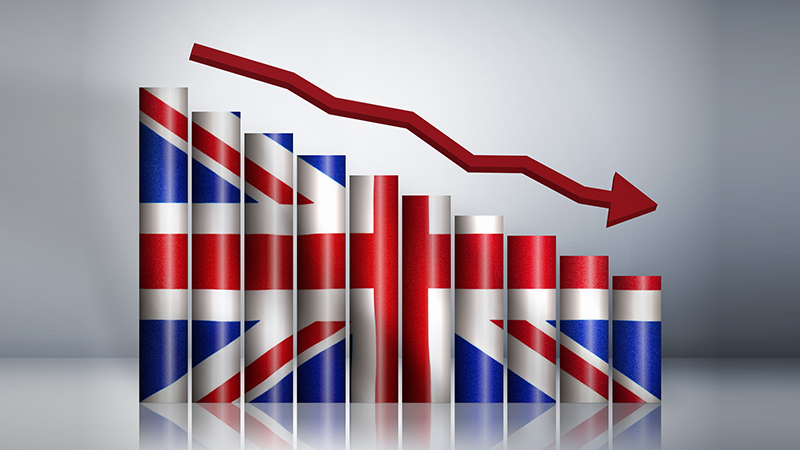UK inflation has fallen below the government’s 2% target for the first time in three years, according to figures from the Office for National Statistics (ONS) published today (16 October).
Headline prices increased by 1.7% year-on-year, marking the slowest rate of inflation since April 2021. Meanwhile core CPI rose by 3.2%, marking the slowest rate of growth in exactly three years, and services CPI fell back below 5% to 4.9%, for the first time in two and-a-half years.
A 5.5% fall in the petrol price per litre had a considerable impact on the fall in headline inflation, with prices in the transport sector falling by 2.4% in the year to September 2024, compared with a rise of 1.2% in the year to August.
See also: AJ Bell warns capital gains reset upon death and IHT reliefs at risk in the Budget
Elsewhere, clothing rose by 0.8% and food and non-alcoholic beverages by 1.8%, respectively. In terms of the latter, this marks the first time since March 2023 that the rate of inflation for food and drink rose since March 2023.
Michael Brown, senior research strategist at Pepperstone, said that despite the seemingly good news, the UK economy is “not entirely ‘out of the woods’ on the inflation front” yet, “particularly amid notable upside risks to the October inflation figures, owing to the 10% rise in Ofgem’s consumer energy price cap which came into effect earlier this month”.
“The ‘Old Lady’, however, is likely to look through another widely-expected rise in headline prices, instead continuing to focus on the degree of inflation persistence within the economy as the primary determinant of both the pace, and magnitude, of further rate cuts this cycle.
“Another 25 basis-point cut at the November meeting remains a certainty, with this morning’s data having also raised the chances of another such cut at this year’s final meeting in December, particularly given Governor Bailey’s recent remarks suggesting that the MPC may become “a bit more activist” in terms of removing policy restriction.”
He added: “Back-to-back cuts, though, will require that the inflation outlook continues to evolve in line with, or better than, the Bank’s projections which, given the choppy progress made of late, is by no means guaranteed.”
See also: Keir Starmer: ‘We will rip up the bureaucracy that blocks investment’
Lindsay James, investment strategist at Quilter Investors, pointed out that Bank of England governor Andrew Bailey has said the central bank could become more aggressive with rate cuts if inflation keeps falling. “But with bond yields rising again and a tricky budget to navigate, the market can’t currently decide on the direction of travel. The latest data may just give them their answer,” she explained.
“Public sector pay deals are likely to slow core inflation’s march downwards, and there are other factors which will push inflation back up towards the end of the year, such as the rise in the energy price cap, so today’s data should be viewed in the wider context.
“Whether it rises enough to put a brake on two more rate cuts in 2024 or just the one remains to be seen, but for now the government and the BoE will be very pleased with the numbers out this morning.”
Neil Birrell, chief investment officer at Premier Miton Investors, added: “There are two ways of looking at this; the Bank of England now has a clear path for cutting interest rates, and the government will see this as a positive for their likely fiscal policy. Alternatively, the read could be that economic activity is slowing faster than was thought and stimulus is needed, which can be provided by the Bank, but the opposite is likely to be coming at the budget.”
This story was written by our sister title, Portfolio Adviser








